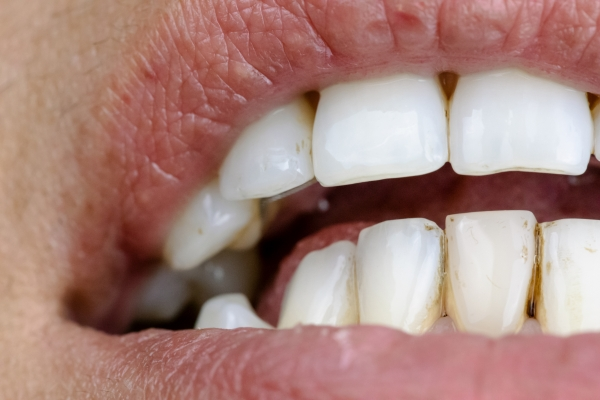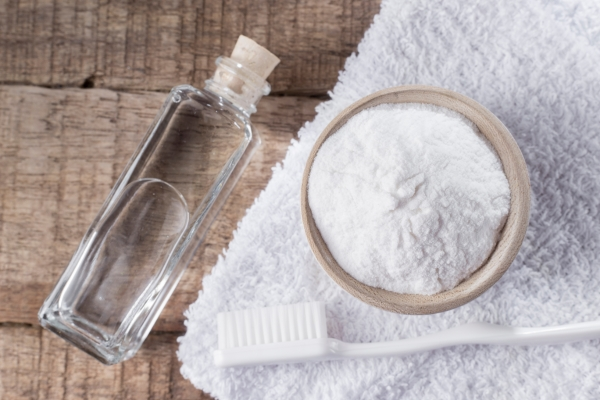Vaping has taken the world by storm as an alternative to smoking, but have you ever wondered about its impact on your teeth? While it’s marketed as a less harmful option compared to traditional cigarettes, there are still questions about its effects on oral health. Specifically, does vaping stain your teeth? And if it does, how can teeth whitening help? Let’s dive into these questions and explore the answers together.
What is Vaping and What You Need To Know About It
First things first, let’s understand what vaping actually is. Vaping involves using an electronic cigarette or a vape pen to inhale vaporized liquid. This liquid, often called e-juice or vape juice, usually contains a mix of nicotine, propylene glycol, glycerin, and flavorings.
- Nicotine: The addictive substance found in traditional cigarettes, which is also present in many vape juices.
- Propylene Glycol and Glycerin: These are the main carriers in the liquid, helping to create the vapor when heated.
- Flavorings: These can range from fruity and sweet to savory and complex, making vaping an appealing option for many.
Vaping is seen as a more modern alternative to smoking because it doesn’t involve burning tobacco, which produces tar and many harmful chemicals. However, the ingredients in vape juice still raise questions about their impact on dental health.
Does Vaping Stain Your Teeth?

So, the big question: does vaping stain your teeth? The answer is yes, but let’s break down why and how this happens.
- Nicotine and Staining: Even though vape juice doesn’t have the tar found in cigarettes, it often contains nicotine. When nicotine is exposed to oxygen, it turns yellow, which can then stain your teeth over time. This staining isn’t as intense as what you might see with traditional cigarettes, but it’s still a concern.
- Flavorings and Colorants: Some vape juices contain colorings and flavorings that can also contribute to staining. These substances can leave residue on your teeth, leading to discoloration, especially with prolonged use.
- Propylene Glycol: This ingredient, while generally safe, can dry out your mouth. A dry mouth means less saliva, which is your mouth’s natural defense against staining and decay. With less saliva, there’s a higher risk of plaque buildup and staining.
Studies have shown that while vaping might be less harmful to your teeth than smoking, it’s not completely without risks. Regular vaping can lead to a yellowing of the teeth over time, especially if good oral hygiene isn’t maintained.
Other Dental Issues Associated with Vaping
Beyond just staining, vaping can cause a number of other dental issues that you should be aware of. According to National Institute of Health, there is evidence from 18 studies that tobacco exposure caused staining of dental hard tissues
- Dry Mouth: As mentioned earlier, propylene glycol can lead to dry mouth also known as Xerostomia. Saliva is crucial for neutralizing acids produced by bacteria in your mouth, washing away food particles, and keeping your teeth clean. Without enough saliva, your risk of cavities and gum disease increases.
- Gum Health: There’s also evidence suggesting that vaping can irritate your gums. Nicotine can reduce blood flow to the gums, which impacts their ability to stay healthy and fight off infections. Over time, this can lead to gum disease.
- Tooth Decay: With a dry mouth and irritated gums, the likelihood of tooth decay rises. The sugars and acids from the flavorings can also contribute to this, leading to more cavities and overall dental issues.
So, while vaping might seem like a safer choice compared to smoking, it’s still important to consider these potential risks. Maintaining good oral hygiene is essential to mitigate these effects.
How to Prevent Teeth Staining from Vaping
Preventing teeth staining from vaping is all about maintaining good oral hygiene and making smart choices. Here are some practical steps you can take:
- 1. Practice Good Oral Hygiene: This might seem obvious, but brushing and flossing regularly are your first lines of defense against stains. Make sure to brush your teeth at least twice a day and floss daily. Using a fluoride toothpaste can help protect your teeth from decay as well.
- 2. Rinse After Vaping: Consider rinsing your mouth with water after vaping. This can help wash away any residue from the vape juice that might cause staining or dry out your mouth.
- 3. Stay Hydrated: Drinking plenty of water throughout the day helps keep your mouth moist and promotes saliva production. Saliva is your natural defense against plaque and staining.
- 4. Use Anti-Stain Products: There are toothpastes and mouthwashes specifically designed to fight stains. Look for products that contain whitening agents or are formulated to remove stains.
- 5. Eat Teeth-Friendly Foods: Some foods can help clean your teeth naturally. Crunchy fruits and vegetables like apples, carrots, and celery can scrub away plaque. Dairy products like cheese and yogurt can also promote healthy teeth by providing calcium and balancing your mouth’s pH levels.
- 6. Limit Stain-Causing Foods and Drinks: Try to reduce your intake of foods and drinks that can stain your teeth, like coffee, tea, red wine, and dark berries. If you do consume them, rinse your mouth with water afterward.
By incorporating these habits into your daily routine, you can help minimize the risk of staining and keep your teeth looking their best.
Teeth Whitening Solutions for Vapers
If you’re already experiencing staining from vaping, don’t worry, there are plenty of teeth whitening options available to help you get your bright smile back.
Professional Teeth Whitening
One of the most effective methods is getting your teeth professionally whitened by a dentist. This usually involves using a high-concentration bleaching agent under the supervision of a dental professional. The results are often immediate and can last a long time with proper care. Here’s what to expect:
- In-Office Treatments: These treatments typically use a stronger bleaching agent and may involve the use of a special light or laser to enhance the whitening process. You’ll likely see results after just one session, although multiple sessions might be needed for the best outcome.
- Take-Home Kits: Some dentists offer take-home whitening kits that include custom-made trays and a professional-grade whitening gel. These kits allow you to whiten your teeth at home over a period of several weeks.
At-Home Whitening Kits
There are also many at-home teeth whitening kits available that can be effective. These kits generally include trays, strips, or pens filled with a peroxide-based gel. They are more affordable than professional treatments, but the results might take longer to achieve and might not be as dramatic. You can read in detail about the Best Teeth Whitening Kits of 2024
- Whitening Strips: These are easy to use and can produce noticeable results in a few weeks. Simply apply the strips to your teeth as directed.
- Whitening Trays: These come with a gel that you put in a tray and wear for a certain amount of time each day. They can be more effective than strips but might be a bit more cumbersome to use.
- Whitening Pens and Essence: These are great for touch-ups orminor whitening needs. They allow you to apply the gel directly to your teeth with a small brush.
Natural Remedies

For those who prefer natural teeth whitening methods, there are some options that can help whiten your teeth, although they might not be as effective as professional treatments or at-home kits.
- Baking Soda: Baking soda is a mild abrasive that can help scrub away surface stains. You can use a baking soda toothpaste or make a paste with baking soda and water and brush with it a few times a week.
- Hydrogen Peroxide: This is a bleaching agent that can help whiten teeth. Some people mix it with baking soda to create a paste or use it as a mouthwash. Be careful not to use too much or too often, as it can irritate your gums.
- Oil Pulling: This involves swishing oil (like coconut oil) around in your mouth to remove bacteria and plaque. While it’s not a quick fix, some people find it helps improve overall oral health and whiten teeth over time.
Maintaining Oral Health with Vaping

Even if you choose the best teeth whitening solution, maintaining your oral health is crucial to keeping your teeth white and healthy. Here are some tips to help you maintain your results:
- Regular Dental Check-Ups: Visit your dentist regularly for cleanings and check-ups. Professional cleanings can remove plaque and tartar that you can’t reach with regular brushing.
- Follow Up with Whitening: If you’ve used a whitening treatment, follow the maintenance instructions provided. Some treatments may come with follow-up products to help maintain your results.
- Avoid Tobacco Products: This might go without saying, but if you want to keep your teeth white, avoid smoking and other tobacco products. They are notorious for staining teeth and can negate the effects of whitening treatments.
- Moderate Your Vaping: If possible, try to reduce your vaping frequency. This can help minimize the potential for staining and other dental issues.
- Use a Straw: When drinking stain-causing beverages like coffee, tea, or soda, use a straw to minimize contact with your teeth.
By following these tips, you can enjoy the benefits of teeth whitening and maintain a bright, healthy smile even if you vape. Remember, good oral hygiene and regular dental visits are key to keeping your teeth in top condition.
Final Thoughts
Vaping may be a modern alternative to smoking, but it still poses risks to your dental health, including the potential to stain your teeth. Understanding how vaping affects your teeth and knowing your options for teeth whitening can help you maintain a bright, confident smile.
If you do notice stains, there are plenty of whitening options available, from professional treatments to at-home kits and natural remedies.Ultimately, the best way to protect your teeth is to stay informed and proactive about your dental health. Regular check-ups with your dentist, combined with good daily habits, can help keep your teeth looking their best, whether you vape or not.
FAQs
1. How long does clear aligner treatment take?
Clear aligner treatment typically takes 6 to 18 months, depending on the complexity of the case and the patient’s adherence to wearing the aligners. Regular check-ups with your orthodontist will ensure that your treatment is progressing as planned.
2. Are clear aligners painful to wear?
Clear aligners are generally more comfortable than traditional braces. However, you may experience mild discomfort when switching to a new set of aligners due to the pressure on your teeth. This discomfort usually subsides within a few days as your teeth adjust.
3. Can I eat and drink with clear aligners on?
No, you should remove your clear aligners while eating and drinking anything other than water to prevent staining and damage. Always brush your teeth before putting the aligners back in to maintain good oral hygiene and prevent any food particles from getting trapped.
4. How often do I need to visit the orthodontist with clear aligners?
You will typically have fewer visits compared to traditional braces. Most orthodontists recommend check-ups every 6-8 weeks to monitor your progress and provide you with the next sets of aligners. These visits are crucial to ensure that your treatment is on track and any necessary adjustments are made.
